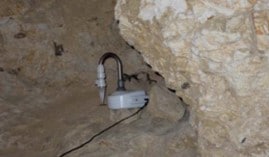Context
The preservation of cultural heritage has become an increasing concern over the past decades. Microorganisms have been identified as potential biodeteriogens that can damage a variety of cultural material and archaeological sites. The colonization of microorganisms on the surfaces of these valuable objects and/or sites, and their mechanism of decay is generally linked with climatic and environmental conditions. Therefore, conservators and curators have to pay much attention to the variability of air quality, microclimate conditions, and the influence of visitors on the damage of cultural heritage sites.
Monitoring air quality and assessing the quantity and the diversity of bioaerosols (bacteria, fungal spores and microalgae) is thus necessary to characterize each archeological and/or cultural heritage site, and determine the reference values from which to compare the effect of visitor’s affluence. In this study, researchers used an impactor (SAS system) and the Coriolis µ to evaluate the microbiome of an archeological site before and after it was open to the public (Figure 1). Collected samples were used to identify the diversity of bacteria, fungal spores and microalgae, as well as the quantification of Adenosine Triphosphate (ATP).
Figure 1

